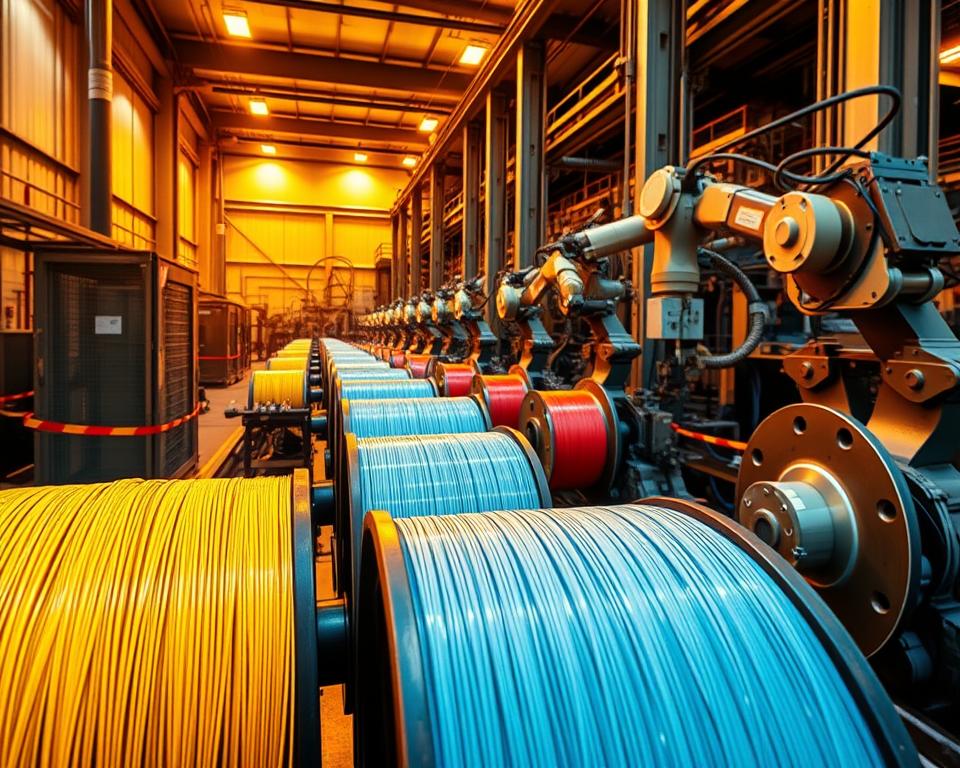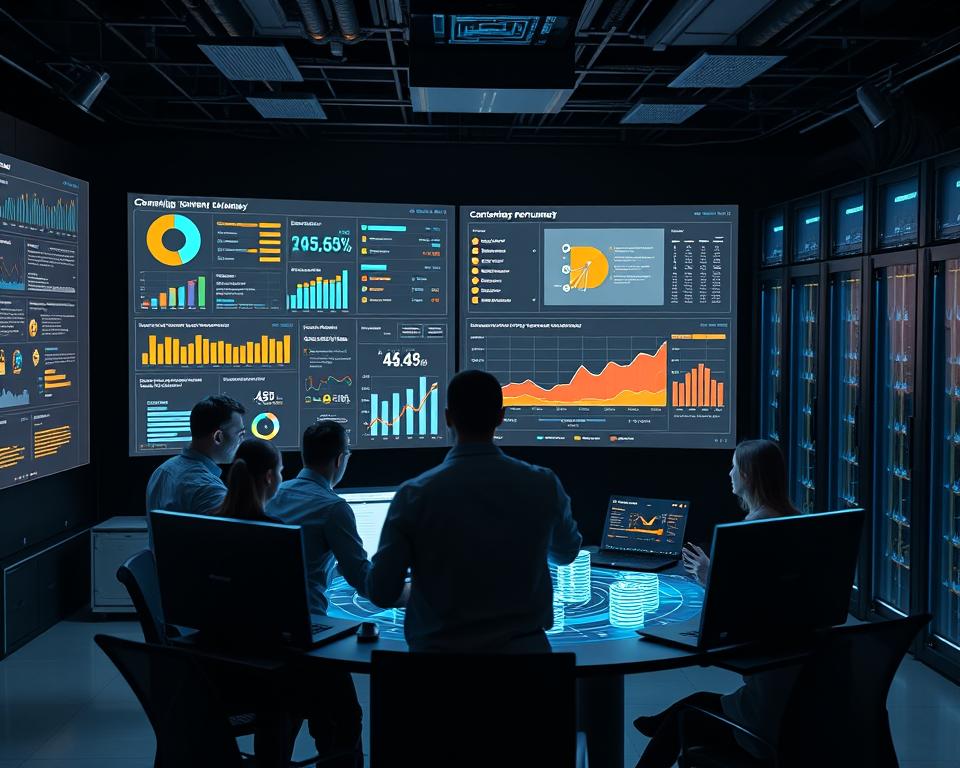Local SEO San Jose: Boost Your Business Visibility
You may not know this, but 56% of businesses did not claim their Google My Business listings? This astonishing data point reveals a substantial void in the local SEO scene in San Jose. It potentially costs business owners valuable recognition. In San Jose’s competitive market, enhancing your online presence is not just helpful—it’s essential. It helps reach with the right audience and spur foot traffic to your establishment.
Using location-specific keywords and refining your Google Business Profile can substantially improve your online exposure. San Jose’s vibrant and dynamic community makes geo-specific SEO support indispensable. They help you shine among competitors, so that customers find your business when looking for relevant products and services. As one of the best SEO companies in San Jose, we focus on community engagement, accurate NAP (Name, Address, Phone Number) citations, and innovative online marketing. These SEO agency strategies elevate your business’s credibility and connect with local clientele efficiently.
Grasping Local SEO
Local SEO constitutes a critical component of San Jose’s online marketing landscape. It’s intended to amplify the online profile of businesses in nearby regions. By optimizing content for community queries, it targets customers in particular locales like Buckhead, Midtown, and Little Five Points. Embedding area-specific keywords is essential, drawing in locals with expressions like “finest brunch locations in Midtown” or nods to the San Jose BeltLine.
Defining Local SEO
Local SEO is intended to boost search rankings for area-specific searches. It uses geo-specific tags to help community members and tourists discover local offerings. San Jose specialists understand how to incorporate keywords into content that embodies the spirit of the city. Successful strategies include neighborhood guides, local festival lists, and tips on navigating San Jose’s traffic.
Importance of Local SEO for San Jose Businesses
San Jose enterprises now depend more on local SEO than ever before. It links them with nearby clients in search of nearby offerings. By adopting robust local SEO strategies, businesses can stand out in search results, not just be present on the internet. Maintaining a Google Business Profile and creating localized content builds trust and increases foot traffic. This fortifies their web visibility, leading to more sales and loyal customers.
Distinctions Between Local and Traditional SEO
Local SEO and standard SEO serve distinct functions in the digital realm. The main difference is in their approach to geo-targeting. Traditional SEO targets a wide audience, targeting popular searches that lack local nuance. On the other hand, local SEO targets distinct locales, which is vital for companies in markets such as San Jose. This approach enables companies to engage with nearby clients.
Using Geography in SEO
Area-specific targeting forms the backbone of local SEO. Businesses strive to capture nearby consumers by using location-specific keywords. For instance, “best coffee shop near me” is a area-focused phrase, unlike the wider expressions used in traditional SEO. An San Jose SEO agency recognizes the importance of local search behavior and designs matching tactics. Local citations and consistent NAP (Name, Address, Phone Number) listings enhance a business’s local search visibility.
Relevance for Foot Traffic-Oriented Businesses
Businesses needing physical visits, like eateries and retailers, greatly benefit from local SEO. They benefit from appearing in local “map packs,” boosting their chances of attracting nearby customers. Feedback and ratings are essential in local SEO, affecting buying choices. While traditional SEO focuses on backlinks and content quality, local SEO emphasizes local engagement and reviews. Refining GMB profiles is key for local businesses to remain competitive in a fast-paced market.
Fundamental Aspects of Local SEO
Successful local SEO depends on a number of core components that improve regional search performance. A highly refined Google Business Profile is crucial, allowing businesses to stand out in local map results. It ensures that customers can locate up-to-date information on services, timings, and directions without hassle. Embedding geo-targeted keywords in site content helps attract local traffic for terms like “San Jose SEO services”. Positive reviews not only boost credibility but also improve search performance and foster trust among potential clients.

Google Business Listing
A Google Business Profile is the bedrock of local presence. Obtaining and confirming this listing is imperative to display correct information. Regularly refreshing the profile with photos, special offers, and compelling content significantly boosts rankings and draws in local clientele.
Incorporating Geo-Targeted Keywords in Content
Embedding geo-targeted keywords in your content is critical for local search optimization. This means embedding location-specific keywords in page titles, meta details, and textual content. It helps businesses rank higher in local searches. With over 60% of searches conducted via mobile, having a mobile-friendly website with robust area-targeted content improves both visibility and customer engagement.
Significance of Online Reviews
Digital testimonials are essential in molding a business’s image. Handling reviews, replying to customer feedback, and fostering positive testimonials are fundamental tactics. Favorable testimonials strengthen credibility and elevate search performance. A robust collection of positive testimonials attracts customers and fosters community trust.
Why Local SEO is Beneficial for San Jose Enterprises
Implementing local SEO can transform the digital footprint of San Jose companies. By targeting location-specific strategies, companies can significantly boost their visibility and customer interaction. This results in higher rankings in community searches and drives additional local visits, essential in the modern competitive landscape.
Enhanced Exposure in Community Searches
Verified Google My Business (GMB) profiles can double consumer trust. An optimized GMB profile raises credibility and improves the odds of showing up in Local Pack listings. This top placement in search outcomes is crucial for drawing in area clients. Incorporating phrases such as “near me” or “San Jose” into your content facilitates better local rankings.
Increasing Foot Traffic
Enhancing local SEO significantly increases physical and online visits. Engaging with online reviews and managing customer feedback on GMB can enhance a business’s reputation. This favors improved rankings. For example, an San Jose eatery with consistent review engagement experienced heightened visibility and more customer engagement.
Prioritizing local search terms increases physical customer visits. This translates into increased revenue and expansion.
Executing Local SEO Approaches
Implementing targeted local SEO can substantially improve a company’s community presence. Local keyword research is key, identifying phrases customers use in their searches. Google My Business is essential for ensuring companies appear in relevant local queries.
Approaches to Finding Local Keywords
Businesses must conduct detailed local keyword research to find terms that resonate with their audience. This research identifies key regional keywords. Adopting ultra-local keywords appeals to users searching for neighborhood-specific offerings. Staying current with local trends and language boosts a business’s online presence, catering to San Jose’s unique needs.
Optimizing Your Google My Business Listing
Refining your Google Business Listing is vital for capturing local searches. Make sure it has accurate NAP information and relevant keywords. Include captivating photos with clear file names and alt descriptions to enhance visual appeal. Frequent updates such as review responses and current operating hours demonstrate dedication to engagement and foster trust. This helps boost search performance and drive more in-person visits.
Online Citations and Local Listings
Online citations are key to boosting local business visibility. They include a business’s name, address, and phone number on various platforms. Maintaining accurate citations bolsters trust and elevates search rankings. It’s imperative to keep this information accurate and consistent to build consumer confidence.
The Importance of Local Citations
Confirming and validating GMB pages is essential for search success. This action results in favorable testimonials that enhance exposure. Sites like Google, Better Business Bureau, Yelp, and Bing are essential for homeowners looking for services. Periodic reviews of your citations detect inconsistencies and duplicate entries, preserving precise NAP data.
Inconsistent NAP information can confuse customers and harm search rankings. It’s imperative to ensure uniformity across every citation.
Generating Local Backlinks via Community Involvement
Engaging locally not only builds community ties but also creates backlink opportunities. Establishing additional citations on reputable platforms boosts local search performance. A strong link-building campaign connects businesses to local directories and external sites, boosting traffic and rankings.
Collaborating with platforms such as The Treehouse streamlines this process, as they guarantee accurate business data over more than 36,500 listings, enhancing community exposure.
| Feature | Description | Benefits |
|---|---|---|
| Google Business Listing Improvement | Confirming your business details on Google. | Increases visibility in local searches. |
| Listing Correction | Identifying and rectifying inaccuracies in online citations. | Enhances credibility and boosts SEO performance. |
| Backlink Building Campaign | Establishing links with regional directories and trusted platforms. | Boosts site traffic and enhances referral visibility. |
| Online Review Strategy | Stimulating customer testimonials online. | Strengthens reputation and bolsters social validation. |
Building Local Credibility Through Community Involvement
Local engagement offers San Jose companies a prime chance to embed themselves within the community. By joining community events and championing local initiatives, businesses raise their profile and gain respect. This strategy cultivates enduring relationships, nurtures trust, and strengthens brand allegiance.
Joining Community Events and Supporting Local Causes
Participating in community events—as sponsors or attendees—demonstrates a company’s dedication to its locality. Activities can include fundraisers, local festivals, hands-on workshops, and informative seminars. By backing community initiatives, companies in San Jose can:
- Enhance visibility among local residents
- Build relationships with community figures and organizations
- Demonstrate their commitment to social responsibility
Forging Strong Community Bonds
Effective community engagement builds relationships that go beyond transactions. When businesses invest in local initiatives, they show their dedication to the area’s growth and well-being. This developing local relationships can improve online search performance. Engaged San Jose businesses often see:
- Enhanced customer retention and repeat visits
- Better digital feedback as trust within the community grows
- Better search engine rankings as community involvement indicates credibility
In conclusion, prioritizing community engagement helps San Jose businesses not only enhance their local authority but also positively contribute to the neighborhood. Establishing authentic local bonds paves the way for lasting growth that serves both the company and its surroundings. These steps cement a company’s reputation in a competitive landscape and leave a long-term legacy.
Why Choose Marketing1on1 for San Jose SEO Services
In the challenging landscape of digital marketing, the choice of an San Jose SEO partner is essential. Marketing1on1 emerges as a top choice, focusing on community-focused SEO for San Jose companies. They formulate individualized plans that cater to the precise objectives and demands of each enterprise.
Local Search Mastery in San Jose
Marketing1on1’s team uses a detailed approach, incorporating SEO tactics like content marketing, link building, and technical optimization. This approach enhances site exposure and increases natural traffic, critical for companies aiming to expand their digital reach. They also emphasize mobile optimization, ensuring seamless functionality on every device. This is vital for reaching local clientele efficiently.
Demonstrated Results for San Jose Companies
Marketing1on1 boasts a history of successful campaigns, carrying out rigorous assessments for functionality and user-friendliness. This ensures your website runs smoothly after launch. Their dedication to ongoing support helps businesses maintain a robust online presence without interruptions. Selecting Marketing1on1 ensures you gain the expert guidance required for success in today’s market.
Enhancing Your Community SEO Tactics
Developing a successful local SEO plan involves more than merely improving organic search results. Combining PPC with local SEO is a powerful approach. It provides rapid exposure along with lasting audience engagement. This integrated approach assists San Jose businesses in excelling within a competitive landscape.
Merging Paid Search and Local SEO for Optimal Outcomes
The synergy of PPC and local SEO creates a comprehensive marketing approach. In San Jose’s dynamic market, this approach can generate remarkable outcomes. Community SEO leverages optimized content and targeted keywords for organic growth. PPC adds an immediate boost with targeted ads for competitive keywords.
Important components are:
- Local keyword discovery and analysis fuel success in both organic and PPC campaigns.
- A refined Google Business Profile bolsters visibility for both SEO and PPC efforts.
- Structured Citation Campaigns: Accurate business information across platforms improves local rankings.
- Local PPC ads aimed at San Jose audiences effectively draw in nearby customers.
- Active local social media strategies increase brand awareness and drive leads.
Ajroni, a leading San Jose SEO firm, provides targeted solutions. These include local SEO audits, competitor analysis, and optimized landing pages. These services integrate seamlessly with PPC strategies to enhance visibility. Employing this dual approach results in improved customer interaction and increased local visits.
Combining PPC with SEO forms a well-rounded strategy that addresses San Jose’s diverse market challenges. It drives maximum expansion opportunities.
Bringing It All Together
Allocating resources to local SEO is essential for companies in San Jose’s fast-paced market. By employing local SEO San Jose strategies, companies can greatly improve their visibility in local searches. This makes it simpler for prospective customers to locate both their online and physical locations. Given San Jose’s diverse population and unique neighborhoods, it’s critical to customize SEO efforts for areas like Midtown and Buckhead.
A powerful local presence provides a competitive edge over big players that overlook area-specific tactics. By ensuring accurate NAP details and soliciting positive reviews, businesses can enhance their credibility. This, in turn, drives more online visits, phone inquiries, and physical traffic.
Partnering with seasoned agencies can further boost your San Jose online marketing. By adopting hyperlocal SEO tactics and participating in community events, businesses can bolster their brand image and drive higher engagement. A holistic local SEO approach is crucial for success in a competitive environment.
FAQ
How does local SEO benefit businesses in San Jose?
It is essential for companies in San Jose. It enhances digital visibility and links them with area clientele. By utilizing local optimization, enterprises can achieve higher rankings and gain increased visibility.
What are the differences between local and traditional SEO?
Local SEO focuses on engaging nearby clients, while traditional SEO caters to a wide demographic. It’s critical for establishments that rely on in-person visits in markets like San Jose.
What are some key components of local SEO?
Crucial factors involve a robust Google Business Profile paired with local keyword integration. Customer testimonials further enhance trust. These aspects enhance web exposure and elevate rankings.
What SEO strategies help increase local traffic in San Jose?
Employing geo-targeted keywords and refining GMB profiles helps attract local visitors. Maintaining precise and compelling content further supports this. This strategy increases the chances of appearing in local searches and the “3-Pack” results.
Why are online citations critical in local SEO?
Digital citations are essential for boosting local visibility. They offer steady reinforcement of business details across various sites. This fosters consumer confidence and enhances search performance.
What impact does local involvement have on SEO?
Community engagement builds a reputation as a local expert. It fosters connections that improve online rankings and trustworthiness.
How does collaborating with a local SEO agency help?
Working with a local SEO agency, like Marketing1on1, gives businesses access to San Jose-specific expertise, which substantially improves search rankings and local engagement.
Is there a benefit to combining PPC with local SEO?
Absolutely, PPC initiatives provide quick exposure for targeted search terms. Combined with local SEO, they provide a balanced approach that enhances brand visibility and lead generation opportunities.









